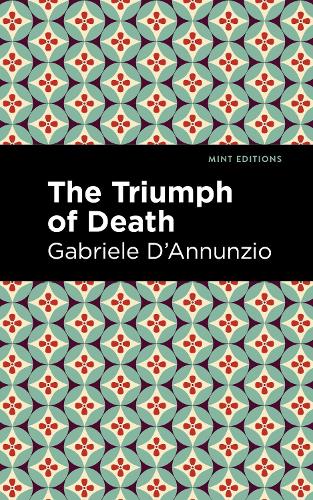
The Triumph of Death
(Hardback)
Publishing Details
The Triumph of Death
By (Author) Gabriele D'Annunzio
Contributions by Mint Editions
West Margin Press
West Margin Press
24th May 2022
United States
Classifications
General
Fiction
Classic fiction: literary and general
853.912
Physical Properties
Hardback
316
Width 127mm, Height 203mm
Description
The Triumph of Death (1894) is a novel by Gabriele DAnnunzio. The third in a cycle of novels exploring the lives of the Italian bourgeoisie, The Triumph of Death was inspired by the authors interpretation of the work of Friedrich Nietzsche and Walter Pater. Considered a central text of Italian Decadentism, the novel has earned comparisons to the work of Oscar Wilde and Joris-Karl Huysmans. When she perceived a group of men leaning against the parapet and looking down into the street below, Hippolyte stopped and exclaimed: What has happened With a slight gesture, betraying fear, she placed her hand involuntarily on George's arm as if to restrain him. After watching the men a moment George said: Someone must have leaped from off the terrace. After witnessing a suicide, Giorgio Aurispa leaves Rome and his lover Ippolita to return to his family in Guardigrele. Reminded of the beauty of the mountains where he was born, he is soon drawn into conflict with his father, a vain nobleman who has left his mother for a mistress and spent every last penny of their immense family fortune. Reminded of his uncles tragic death, overwhelmed with his responsibilities as a son, Giorgio flees the mountains for the coast, buying a home in San Vito Chietino where he attempts to pick up where he left off with Ippolita. Gloomy and paranoid, Giorgio struggles to regain his sense of beauty, the only thing in life he ever loved. With a beautifully designed cover and professionally typeset manuscript, this edition of Gabriele DAnnunzios The Triumph of Death is a classic work of Italian literature reimagined for modern readers.
Author Bio
Gabriele DAnnunzio (1863-1938) was an Italian poet, playwright, soldier, and political figure. Born in Pescara, Abruzzo, DAnnunzio was the son of the mayor, a wealthy landowner. He published his first book of poems at sixteen, launching his career as a leading Italian artist of his time. In 1891, he published his first novel, A Child of Pleasure, followed by Giovanni Episcopo (1891) and Linnocente (1892), which earned him a reputation among leading European critics as a member of the Italian avant-garde. By the end of the nineteenth century, he turned his efforts to writing for the stage with such tragedies as La Gioconda (1899) and Francesca da Rimini (1902). Radicalized during the First World War, DAnnunzio used his experience as a decorated fighter pilot to spread his increasingly nationalist ideology. In 1919, he spearheaded the takeover of the city of Fiume, which had been ceded at the Paris Peace Conference. As the leader of the Italian Regency of Carnaro, he sought to establish an independent authoritarian state and to support other separatist movements around the globe, but was forced to surrender to Italy in December 1920. Despite his failure, DAnnunzio inspired Mussolinis National Fascist Party, which built on the violent tactics and corporatist system advocated by the poet and his allies. Toward the end of his life, DAnnunzio was named Prince of Montenevoso by King Victor Emmanuel III and served as the president of the Royal Academy of Italy.
